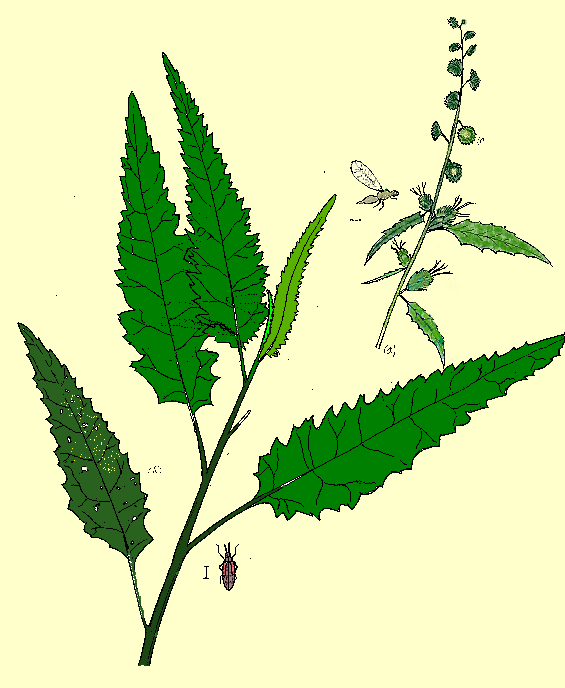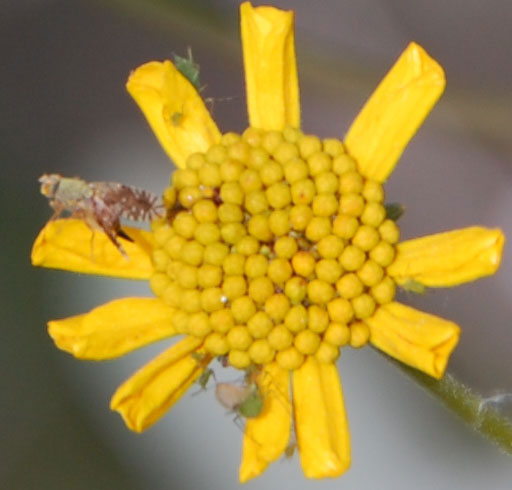Ambrosia Fruit Fly
Euaresta

The small fruit fly adult is shown at upper right near the flowering/fruiting inflorescence. The host plant shown here is Canyon Ragweed (Ambrosia ambrosioides). Other organisms associated with this plant and shown above include a red and black hispine leaf beetle. The stippled spots on leaf at lower left represent Gall Mites.
Tephritidae -- Fruit Fly Family
Many species of true fruit flies belonging the family Tephritdae feed on developing seeds within the flower heads of composites (Asteraceae). Unlike pomace flies, the common fruit fly of over-ripe fruit, Tephritdae feed in developing fruit. Several different species of Euaresta develop as larvae (maggots) within the developing seeds inside the burrs of Ambrosia - the bursages and ragweeds. The feeding larvae destroy the seeds and so this insect has been considered as a possible biological control agent for ragweeds that cause hay fever.

This adult Euaresta fly is alighted on an inflorescence of Brittlebush (Encelia farinosa).